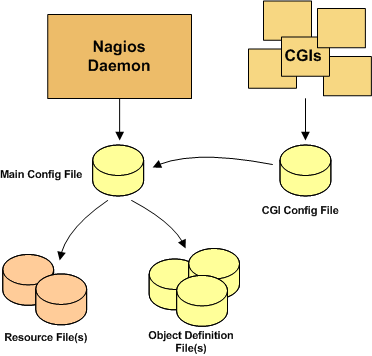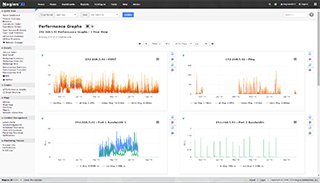
Configuration Overview
Need Help Configuring Nagios?
Our tech support team is happy to help you with any questions you might have. Contact us on our online support forum at https://support.nagios.com/forum/
Nagios XI Makes Monitoring Easier:
Nagios XI is the easy-to-use, enterprise version of Nagios that features:
- Web-Based Configuration provides advanced configuration features
- Monitoring Wizards make it easy to monitor new devices, applications, and services
- Customizable Dashboards allow for per-user customization
- Integrated Performance Graphs provide trending and capacity planning information
- Advanced Reports provide data insight and exporting capabilities
- Data Visualizations enable powerful analysis of patterns and problems
- Nagios Core Import functionality makes it easy to migrate from Nagios Core
- ... and many other features
Download a free 30-day trial to give Nagios XI a spin.
Inquire today and let our Quickstart team help you get started with Nagios XI
 Up To: Contents
Up To: Contents
 See Also: Main Configuration File, Object Configuration Overview, CGI Configuration File
See Also: Main Configuration File, Object Configuration Overview, CGI Configuration File
Introduction
There are several different configuration files that you're going to need to create or edit before you start monitoring anything. Be patient, configuring Nagios Core effectively can take quite a while, especially if you're first-time user. Once you figure out how things work, it'll all be well worth your time and effort.
Note: Sample configuration files are installed in the /usr/local/nagios/etc/ directory when you follow the quickstart installation guide.

Main Configuration File
The main configuration file contains a number of directives that affect how the Nagios Core daemon operates. This config file is read by both the Nagios Core daemon and the CGIs. This is where you're going to want to get started in your configuration adventures.
Documentation for the main configuration file can be found here.
Resource File(s)
Resource files can be used to store user-defined macros. The main point of having resource files is to use them to store sensitive configuration information (like passwords), without making them available to the CGIs.
You can specify one or more optional resource files by using the resource_file directive in your main configuration file.
Object Definition Files
Object definition files are used to define hosts, services, hostgroups, contacts, contactgroups, commands, etc. This is where you define all the things you want monitor and how you want to monitor them.
You can specify one or more object definition files by using the cfg_file and/or cfg_dir directives in your main configuration file.
An introduction to object definitions, and how they relate to each other, can be found here.
CGI Configuration File
The CGI configuration file contains a number of directives that affect the operation of the CGIs. It also contains a reference the main configuration file, so the CGIs know how you've configured Nagios and where your object defintions are stored.
Documentation for the CGI configuration file can be found here.
